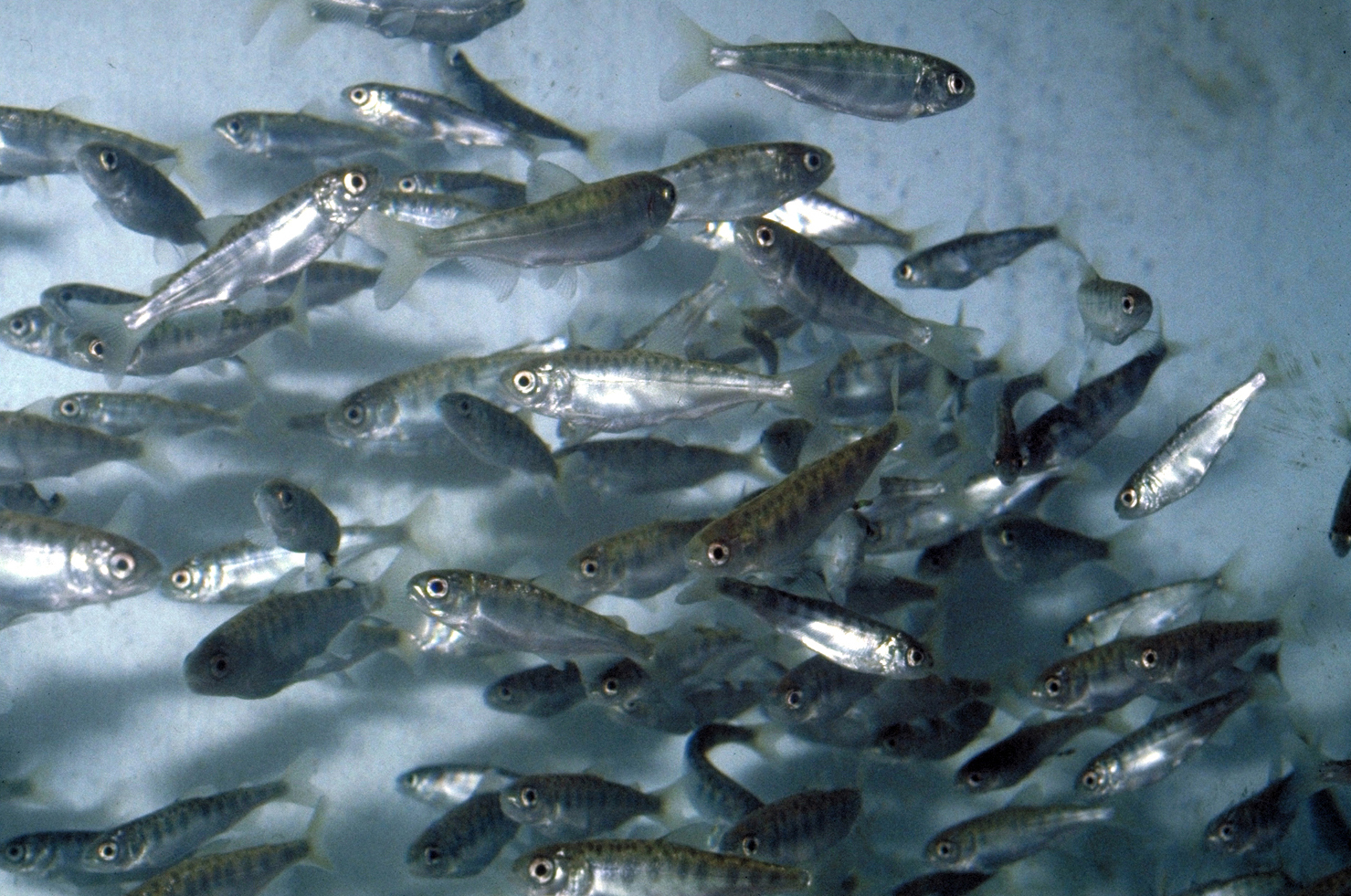An estimated 50,000 coho smolts (approximately one year old juvenile salmon, about 6”in length, that hatched in early 2022) began their migration to the ocean from West Marin’s creeks this last Spring, some of whom will survive to adulthood and return to their natal streams to spawn in the winter of 2024-25.
This is the most smolts recorded in the Lagunitas Watershed in two decades of monitoring.

SPAWN staffers Preston Brown and Ayayno Hayes measure smolts
Records were broken in Lagunitas creek and one of the larger tributaries, Olema creek. One of the highest single-day counts in the season came out of Olema creek with over 1000 coho smolts captured, following other high-count days, Ayano Hayes, SPAWN’s Watershed Biologist recounted from an update given during the season. NBC TV came out to film SPAWN’s monitoring and a video can be seen here https://www.nbcbayarea.com/news/local/stories-by-joe-rosato-jr/winter-rain-marin-county-salmon/3248906/.


Interns Nyna Hong and Alejandro Rosales assist in smolt trapping and data collection
The reasons for the high smolt migration are multi-factorial. For one, the positive results from all the great creek restoration work being done in the watershed should be highlighted, including SPAWN’s floodplain restoration in the ghost town of Tocaloma and the Roy’s Riffle project on the former San Geronimo Golf Course. Similar projects to improve habitat have been completed throughout the watershed by the National Park Service and Marin Water. Re-creating floodplains and adding large woody debris structures provide more food and shelter for young fish, improving their survival during the most vulnerable time in their lives.
In contrast to restoration work, things out of our control that can heavily impact fish survival are rainfall patterns and other natural elements. Rainfall patterns make a huge difference in survival rates of both eggs and juveniles. Large early storms can wipe out nests (called redds) and lower the number of fish that are able to survive and hatch. Large storm events can also kill recently hatched fish that are too small and delicate to take on strong flows. At the other extreme, drought conditions strand fish in drying pools, making them easy prey for predators like birds and raccoons. Drought can also reduce food resources and impair water quality for young salmon to thrive, creating competition and stress which lowers survival rates.
Happily, the stars aligned for this cohort. Minimal intense rain events during the time of hatching benefited juvenile survival, while great rain and flow allowed ease for migration, and restored habitat matures and continues to offer healthier habitat for the fish every year. Hopefully, these teenage fish will find good ocean conditions that will enhance survival during the adult part of their lives, and we hope to have a great run of spawners in the winter of 2024-25.
If you are in the Bay Area, please join an upcoming volunteer restoration day by joining our mailing list here: https://us.e-activist.com/page/3805/subscribe/




